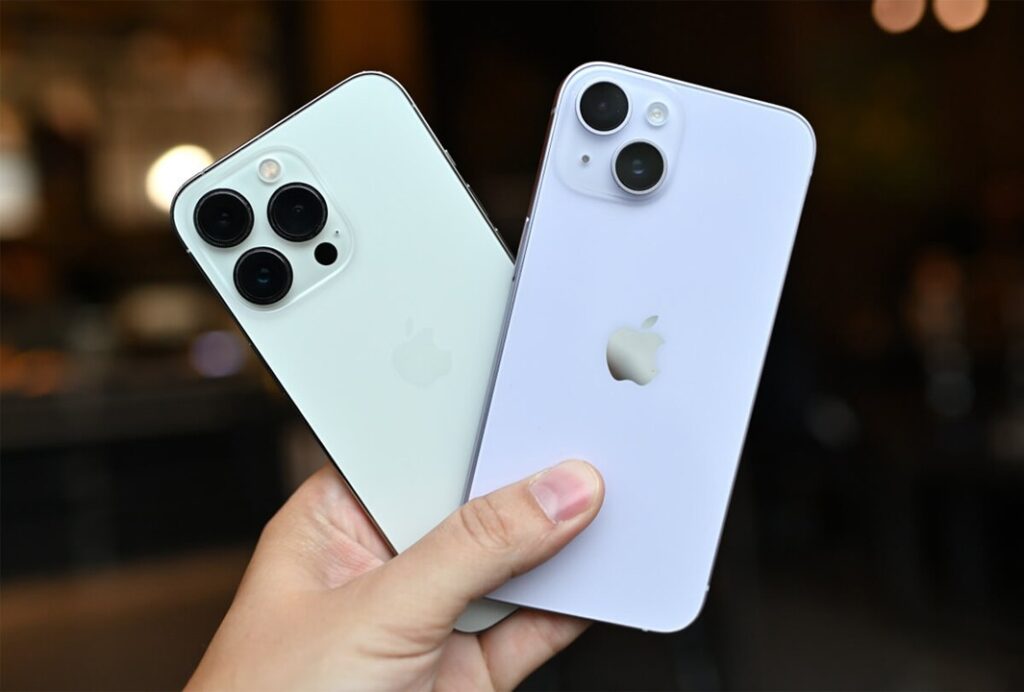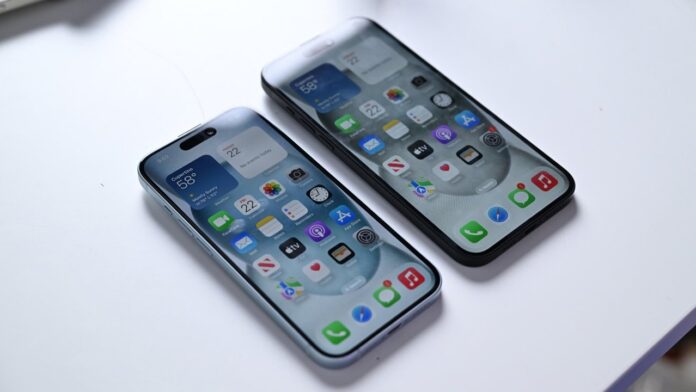Apple’s iPhone 15 series maintains its heritage of beautiful design, powerful performance, and premium features, but this year, the choice between the iPhone 15 and iPhone 15 Plus boils down to more than size. While both models use the same A16 Bionic chip, camera system, and gorgeous OLED display, they differ in important ways such as screen size, battery life, and overall usability.
The iPhone 15 is designed for those who prioritize comfort, portability, and one-handed use. The iPhone 15 Plus, on the other hand, is ideal for individuals who desire a larger display and a longer battery life, making it a favorite among content creators and power users.
In this review, we’ll look at the key differences between the two versions, from design and display to performance, battery life, and camera, to help you determine which is best for you in 2025.
IPHONE 15 VS IPHONE 15 PLUS: SPECS COMPARISON
Do you want to acquire this year’s affordable iPhone 15 vanilla or the Plus? We’re here to help you. They both have their quirks and strengths, but the good news is that the iPhone 15 and 15 Plus are a significant upgrade over their predecessors, so whichever you choose, you will notice a measurable improvement in performance, efficiency, display quality, and, to some extent, camera performance.
iPhone 15 vs 15 Plus Camera Review – Are They Really the Same?
- Main camera: 48 MP (f/1.6, 26mm wide) with sensor shift OIS.
- Ultra-wide camera: 12 MP (f/2.4, 13mm) with 120° field of view
- Front camera: 12 MP (f/1.9), autofocus.
The iPhone 15 and iPhone 15 Plus are identical in terms of cameras. Both include a new 48MP main camera capable of taking super-high-resolution photos and a 12MP ultra-wide camera.
According to our reviews, the iPhone 15 and iPhone 15 Plus excelled at photographing in low light. Lewis Painter, our Mobiles Editor, stated that “low light is one area where the iPhone 15 Plus has seen a significant improvement year on year, delivering shots not that far off what you’ll get from the iPhone 15 Pro.” It was immediately able to capture photographs in extremely low-light conditions, such as a moonlit lawn.

Performance Highlights
- Photo Quality: Both models provide natural color reproduction and accurate skin tones, particularly in bright light.
- Portrait Mode: Efficient depth estimation and fine detail segmentation result in clear, well-separated subjects.
- Video Stabilization: Smooth stabilization ensures that footage remains steady even when in motion.
- Low-Light Performance: Both phones function well inside, however, noise levels rise in dimmer conditions.
- Zoom Capabilities: Limited zoom range compared to Pro versions, yet seamless zooming in preview mode.
Nonetheless, the increase to 48MP has made a considerable difference, with our iPhone 15 Plus review concluding that it “serves up great shots across the board” and our iPhone 15 review noting that there is “awe-inspiring computational photography.” Here are some camera examples from both phones to help you decide.
iPhone 15 vs iPhone 15 Plus: Design & Display Compared
- The iPhone 15 Plus has a 6.7-inch screen, while the iPhone 15 has a 6.1-inch Super Retina XDR display.
- Both offer a maximum outdoor brightness of 2000 nits and support HDR10 and Dolby Vision.
- Both have metal frames and are available in five pastel colors: black, blue, green, yellow, and pink.
- The iPhone 15 weighs roughly 171 grams, while the Plus weighs around 201 grams.
- With greater screen real estate, the Plus model is perfect for multitasking, gaming, and streaming.
- The normal iPhone 15, on the other hand, is notably lighter, smaller, and simpler to use with one hand.

The iPhone 15 and iPhone 15 Plus measure 147.6 x 71.6 x 7.8mm and 160.9 x 77.8 x 7.8mm, respectively, and are roughly similar in size to their predecessors. This makes the iPhone 15 Plus much larger than the iPhone 15.
These specifications allow for a 6.1-inch OLED display for the iPhone 15 and a 6.7-inch OLED for the iPhone 15 Plus. The inclusion of the aforementioned Dynamic Island results in a minor increase in both resolutions, to 1179 x 2556 for the iPhone 15 and 1290 x 2796 for the iPhone 15 Plus. However, the two phones have nearly the same pixel density, so the only major difference in display is size.
Unfortunately, Apple has not increased the refresh rate of either of these panels, so it’s 60Hz all the way. Even Android phones, which are among the greatest cheap phones, now have 90Hz and 120Hz screens, but Apple appears to want to keep this a pro-only feature. Apple has also not added its always-on display to either phone.
Finally, these phones are quite comparable in terms of design and display, with the same color options, an IP68 water-resistant rating, and brightness levels of up to 2,000 nits.
The main difference is that the iPhone 15 Plus is larger and heavier, but it also boasts a larger screen.
iPhone 15 vs 15 Plus Performance Review – Which is Faster?
Both the iPhone 15 and iPhone 15 Plus are powered by the A16 Bionic technology, therefore, their performance is practically comparable. However, certain changes in battery life and display size may influence your experience.
- Processor: Both models include the A16 Bionic CPU, which ensures excellent multitasking, gaming, and application performance.
- RAM: 6GB on both variants, allowing for effective memory management.
- Gaming: The A16 Bionic provides seamless gameplay, however, both models are limited to 60Hz frame rates.
- Battery Life: The iPhone 15 Plus has a larger 4,383mAh battery, which provides more screen-on time than the iPhone 15’s 3,349mAh battery.
- Heat Management: Under severe loads, the iPhone 15 may run somewhat hotter, whereas the iPhone 15 Plus’s bigger size allows for better thermal dissipation.
Whether you choose the iPhone 15 or iPhone 15 Plus, you’ll enjoy the same flagship-level performance. The only significant difference? The Plus can last longer without needing a charge. If you’re looking for raw speed, either model will meet your needs.
GET THE IPHONE 15 for
- Smaller dimensions and less weight.
- The lesser price.
GET THE IPHONE 15 PLUS for
- The larger display.
- The charging speed is slightly faster.
- A little longer battery life


